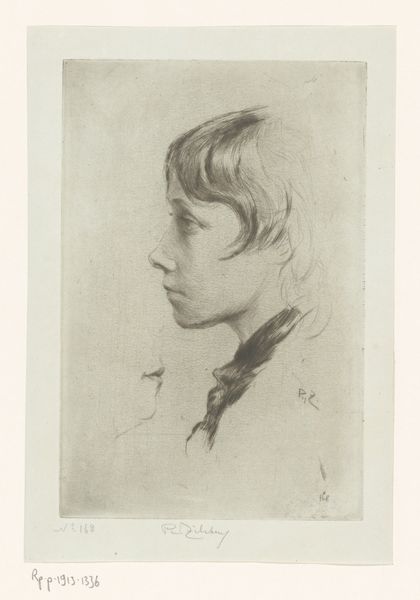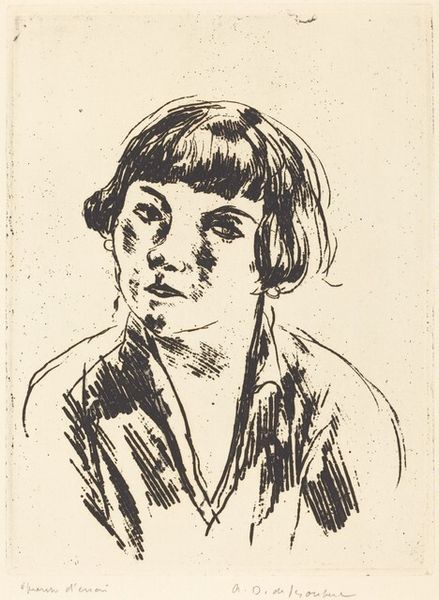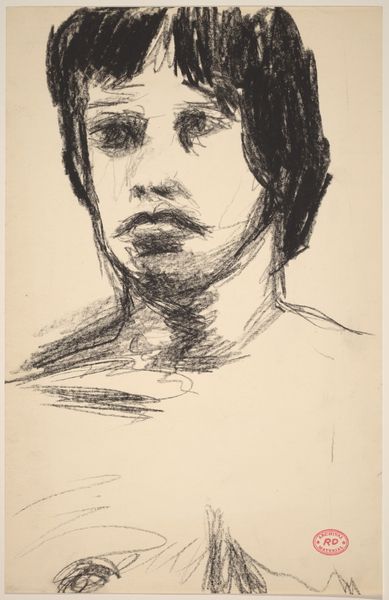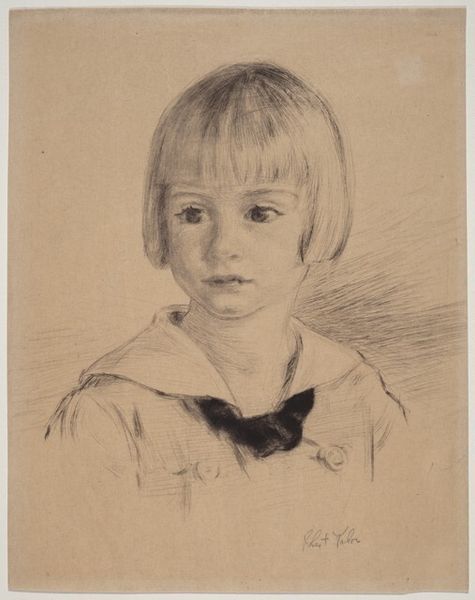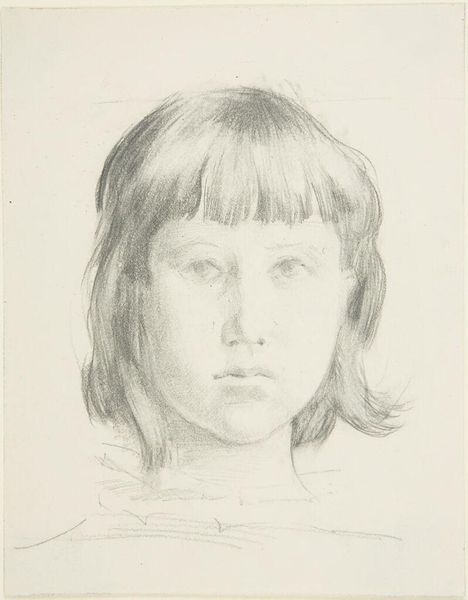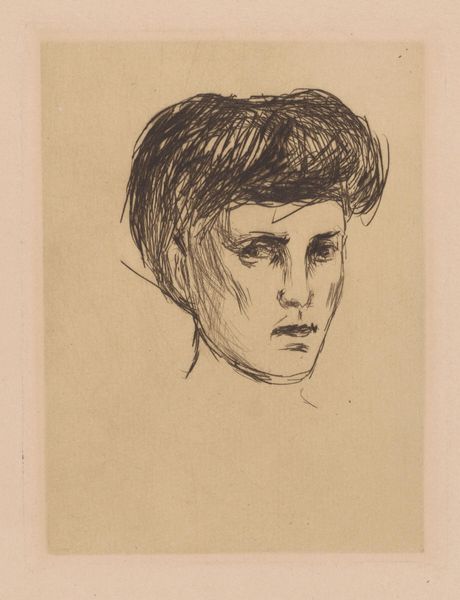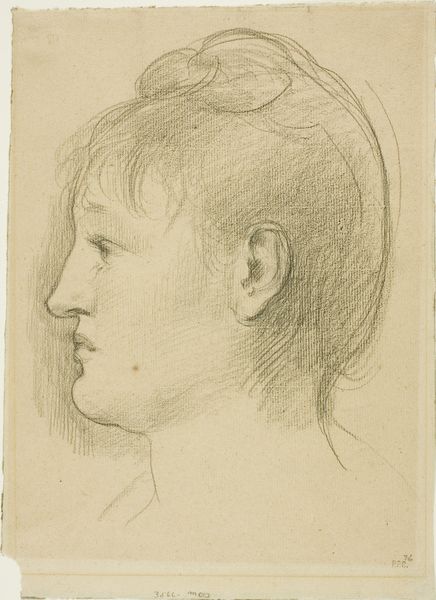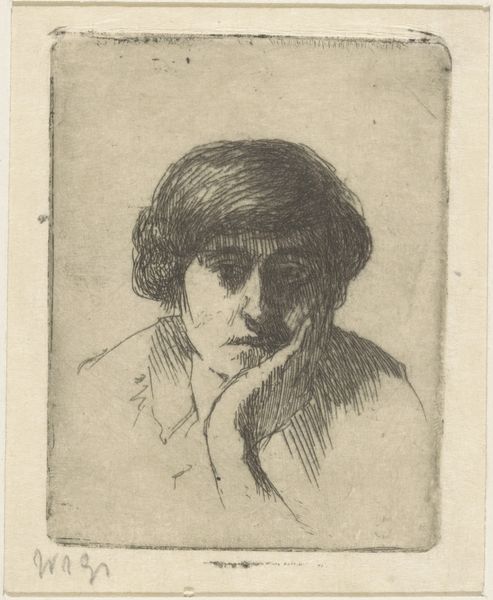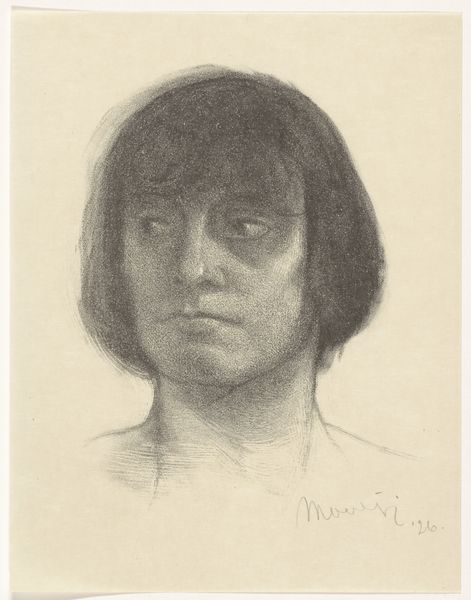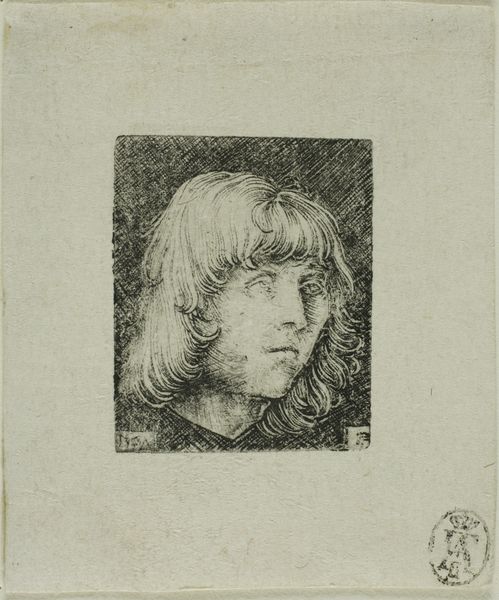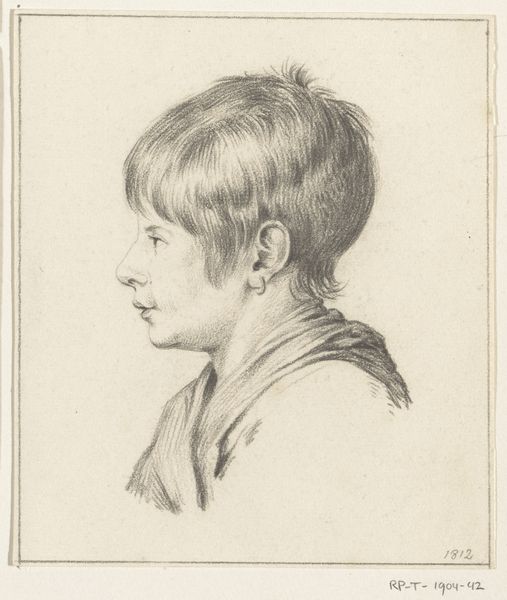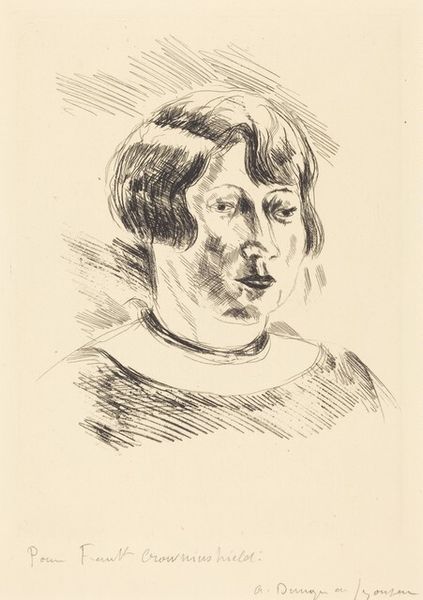
print, etching
#
portrait
# print
#
etching
#
figuration
#
portrait drawing
#
realism
Copyright: National Gallery of Art: CC0 1.0
Curator: Looking at "Margot", an etching from 1920 by James McBey, one can't help but be struck by the subject’s penetrating gaze. It seems incredibly modern, doesn't it? Editor: It does have a striking quality! My initial reaction is one of melancholy. The slightly averted eyes, the wisps of dark hair – there's an air of introspection. And that somewhat loose application of hatching makes her seem vulnerable. Curator: McBey was a prominent figure in the etching revival of the early 20th century. What's fascinating is how he translated his experiences as a war artist during World War I into these intimate portraits. While “Margot” lacks explicit reference to global conflicts, do you sense something there? Editor: I do. I wonder if "Margot" somehow embodies the quiet trauma of the time. Look at the economy of the lines. Is the sitter representative of the young people growing up during an intense moment? There is an aspect of austerity and constraint communicated through what could be read as realism. What do we know about who she was? Curator: Details about the sitter are unfortunately scarce. Yet, it’s important to recognize the broader context. Portraiture during this period was often about projecting a certain societal status or aspiration. What can one glean? Editor: Her simple attire might indicate someone outside the upper echelons of society. She is probably one among the women making their own ways without defined societal positions. And though it is 1920, post-suffrage in the US, perhaps McBey’s representation implies that she cannot fully exercise any newfound potential. Curator: Perhaps you are correct in thinking of what seems to be restrained within. Considering McBey’s career, he made several contributions to depicting those most impacted by the trauma of WWI. It's food for thought regarding how societal anxieties trickle down even into the most seemingly serene of portraits. Editor: Yes, a quiet strength with a trace of resignation… it invites us to ponder what "Margot’s" world, and her role in it, was like. Curator: Absolutely, it's in pieces like these, not just the grand historical canvases, where we truly encounter the heartbeat of an era.
Comments
No comments
Be the first to comment and join the conversation on the ultimate creative platform.
